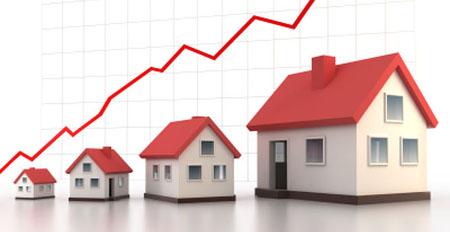You’re buying a new house. You’re thrilled and relieved. But if you’re like most new-home buyers, you’re also confused. What, precisely, do you need to know — and how hard is it to find out?
First on your need-to-know list is the price. That is easy enough to find out.
But the sale price represents only the first-time cost. How about the lifetime cost? That’s harder to calculate.
Home Price Versus Lifetime Cost
As you might expect, the lifetime cost includes your mortgage payments, property taxes, and homeowner’s insurance. It also includes the estimated cost of utilities, maintenance (repainting, for example) and replacement of various parts as they wear out.
While most new-home buyers rarely take the lifetime cost into account, it is a general consideration for many, if not most, institutions, businesses, and government agencies, as they plan a new building that they expect to occupy for 30 to 50 years.
These owners often specify materials that cost more initially but last significantly longer. Although nothing lasts forever, this strategy avoids the costs to replace cheaper but inferior materials several times during occupancy. This long-term perspective also puts a premium on materials and building details that increase energy efficiency and lower utility bills.
However, when the person constructing the building plans to sell it at completion instead of occupying it, the calculations are different. The first-time cost becomes a paramount consideration.
Buyers often want the most space for the lowest price
That’s the situation with a production home builder. To attract as many buyers as possible to a project, the builder wants a base price that is as low as possible while still covering land and construction costs and producing a profit. Materials are selected accordingly.
Buyers often want the most space for the lowest price. Because they assume they won’t live in a house for more than seven or eight years, many figure that lifetime cost and replacement issues are not their problem.
But it will be an issue for the next owners, who will pay the cost of the replacement parts and, unless they’re very handy, the labor cost to install them. If they adopt a similar strategy, they will end up replacing the same parts again or handing the problem off to the next owners, as their seller did to them.
From the individual homeowner’s viewpoint, this is penny wise and pound foolish
Using a more durable product initially will save money in the long run. That’s especially true because many buyers end up staying in their house longer than they originally anticipated.
From the standpoint of society, this “buy the cheapest” strategy is also a nearsighted waste of money and resources — unfortunate consequence of our buy it, use it, throw it away and buy-a-new-one mentality.
If you decide to use materials that are more durable and more expensive, how do you calculate their lifetime cost?
If you’re working with an architect and a custom builder on a new house, estimating replacement costs of components can be relatively easy. Every material will be specified, and durability will be a central factor as you choose them.
But if you’re working with a production builder, it may be harder to get information on the durability of the materials he is using and their associated lifetime cost. Detailed specifications, which the builder determines, are not routinely given out.
However, you can get a general idea by asking about the products used in the building envelope. They are the ones that generally wear out first because they are subjected to the weather. The builder should be willing to give you specific product information, including the brand name, item number and warranty information for the roofing, windows, and siding. If the builder offers upgrades for these, you will want that product information as well.
Studying this material will help, but you also need to know how these products perform in a real house in your climate, which can have an enormous effect on durability. For a candid assessment and some idea of replacement cost, ask the staff at the local building-supply stores patronized by builders in your area and at specialized suppliers of materials like roofing.
The first-time and lifetime costs of materials are not the only cost considerations
There can be an environmental cost.
For example, builders routinely use vinyl for windows, siding, flooring, pipes and more because it is generally lower-priced and durable. But polyvinyl chloride, or PVC, another name for vinyl, is not an environmentally benign material.
At every step of the PVC production life cycle, hazardous byproducts are formed, including organochlorines and dioxin, which is so toxic that even an infinitesimally small dose (a small number of parts per trillion) can damage human health.
The by-products of PVC production are also highly persistent in the environment — that is, they degrade very slowly.
Alternatives for most PVC building products are readily available though typically the non-vinyl product has a higher first-time cost.
But PVC building products will not disappear from the home-building arena anytime soon. The U.S. Building Green Council spent the past five years studying the pros and cons of four categories of PVC: piping, siding, flooring and windows.
The study was prompted by a question concerning the council’s Leadership in Energy and Environmental Design program, commonly called LEED, a nationally recognized green building rating system.
The question: Should a LEED credit be given for avoiding the use of PVC?
The Technical and Scientific Advisory Committee’s answer: No.
The committee found that, in each category, the impact of PVC alternatives on human health and the environment was problematic. Flooring was the only category in which the group concluded that the alternatives, cork, and linoleum, were preferable. They were deemed less harmful than sheet vinyl and vinyl floor tiles, two typical flooring products.
The group also concluded that a focus on the effects of these building materials, rather than the materials themselves, would have been more useful. Almost every durable building material can have an adverse impact. The critical question for policymakers and consumers to decide is which negative consequences matter most: producing acid rain, contributing to global warming, harming human health?
Drawing an analogy to a tasty and creamy ice cream cone: Which is worse — lots of calories or an excessive amount of fat?
A sensible answer is less of both, way fewer calories and far less fat. Looping back to the PVC issue, consumers and policymakers should push for building products that have a minimal effect on both human health and the environment.
At the very least, when new-home buyers consider the lifetime costs to build their dream house, the environmental cost of the materials they are considering should be factored in.
For more information, see the Healthy Building Network’s Web site, http://www.healthybuilding.net, to download the free report “Environmental Impacts of Polyvinyl Chloride Building Materials,” by Joe Thornton.








